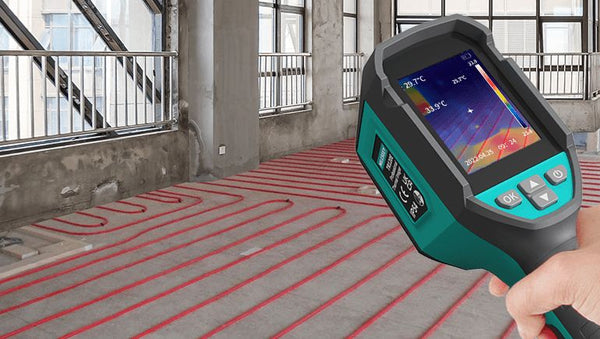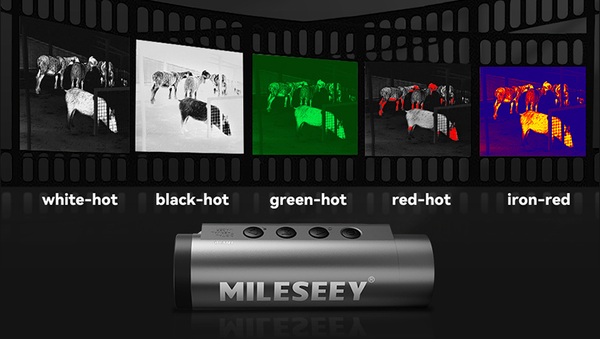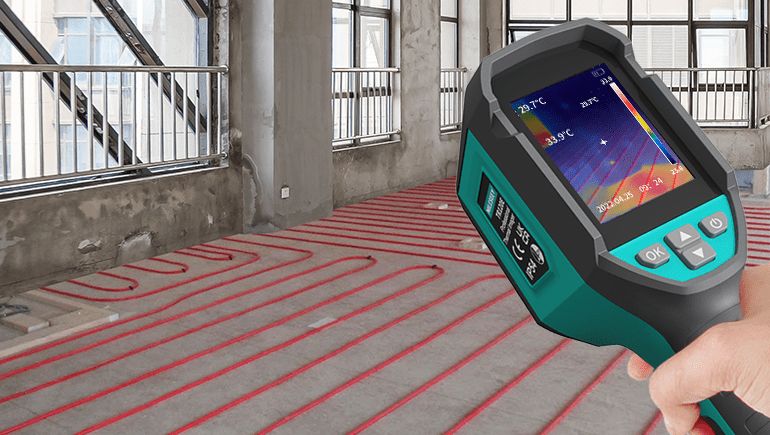One type of camera that can detect and record infrared radiation is called a thermal camera. Thermography, also known as thermal imaging, captures an image using a thermal camera. Thermal imaging cameras are relevant in industries like law enforcement, the medical field, manufacturing, and the industrial sector.
Infrared radiation is picked up by thermal cameras to create detailed photos that are either too dim or too far away for the naked eye to pick up. Find about what is a thermal camera and how it works in this article.

What is a thermal camera?
A thermal camera is a type of camera that uses Infrared technology (heat signatures) to produce an image. The camera picks up the infrared radiation and transmits the data to display it on the screen as a picture. Security, SAR, and industrial applications are just some of the possible uses for thermal cameras.
Here are other applications of thermal cameras:
- Cameras with thermal vision can see through the hottest of disguises.
- People and animals can be located with the help of thermal imaging cameras.
- Some fires can be found using thermal imaging cameras.
- Pipe leaks can be located with the service of thermal imaging cameras.
- Industrial operations can be viewed in real-time with thermal imaging cameras.
- Rescue workers can employ thermal imaging cameras on rescue missions
A brief history of the thermal camera
Sir Frederick William Herschel is credited with the invention of the first thermal camera, which was made in the early 1800s. Herschel wanted to figure out a means to monitor the infrared radiation emitted by the sun since he was interested in it. He devised an instrument that he named a thermometer capable of measuring the heat emitted by various objects.
Herschel took the initial step in creating the thermal camera with his thermometer. Early in the 20th century, researchers began developing infrared detectors that might be utilized to measure heat. During World War II, pilots made use of these detectors to assist them in locating enemy targets.
Since then, the technology was refined for usage in civilian contexts. There are a variety of applications for thermal cameras, including inspection in the medical profession, law enforcement, and the industrial sector.
How does thermal imaging work?

The principle behind thermal imaging is that all objects give out some amount of infrared radiation. The human eye cannot see infrared energy, that’s when thermal imaging cameras come in. Thermal imaging detects infrared energy, and the quantity that an object emits, and the quantity of infrared can be used to estimate its temperature.
Thermography refers to the process by which the infrared radiation of an object is transformed into visible light for thermal imaging. The technique of converting infrared radiation into visible light is referred to as thermography, and it is used in the field of thermography. The process of turning radiant rays into visible light is what we mean when we talk about thermography. After that, a representation of the object is produced with the help of visible light which is called a thermogram.
Thermal cameras work by detecting the infrared radiation emitted by heat signatures. All things with temperatures above zero radiate infrared light into the surrounding space. The quantity of infrared radiation emitted by an object is proportional to the temperature at which the thing is located. Infrared radiation can be detected by thermal cameras, creating a visual image from the data they gather.
When do you use thermal cameras?
Thermal imaging cameras find widespread application across many fields and markets. A thermal camera's ability to see heat makes it valuable for medicine; it is common practice to employ thermal cameras to recognize infrared cameras in a specific location. This can be useful for various jobs, including detecting humans or animals in the dark, locating fires or another source of excellent heat, and other similar activities.
Thermal imaging cameras are commonly utilized in the auto industry for this purpose. Thermal imaging cameras are used to inspect buildings for issues with insulation and leaks. The usage of thermal imaging cameras has revolutionized the security business.
Mileseey Thermal Imagers
Mileseey TR120E Infrared Thermal Imager
The Mileseey TR120E Infrared Thermal Imager is an excellent thermal imager at a reasonable price, making it useful in many situations. The image can be used for a wide range of purposes, including but not limited to electrical inspections, building inspections, and HVAC inspections, thanks to its 120x90 resolution and temperature sensitivity of 0.07C. The image has a 3.2 LCD, an internal LED light, and a micro-SD card slot for data storage.
Mileseey TR120 Infrared Thermal Imager with a visible light camera
The Mileseey TR120 Infrared Thermal Imager combines the advantages of an infrared thermal imager and a visible-light camera. It can take pictures in JPG and RAW formats at a resolution of 1920x1080. The LCD screen on this camera is a generous 3 inches in size, allowing you to see your subject well as you snap pictures. To further facilitate precise measurements, the TR120 includes a built-in laser pointer.
Mileseey TNV10 Infrared Night Vision Thermal Imaging Monocular
Mileseey TNV10 Thermal Night Vision Thermal Imaging Monoculars are portable. Thermal imaging and Night vision are their specialties. The monocular' infrared sensor is uncooled. This lets you see in the dark, through smoke and fog. The monocular' digital display shows real-time thermal images. It also has a record mode that allows you to capture the thermal image for subsequent examination.
FAQs
1. How much does a thermal camera cost?
Each thermal camera has its advantages, disadvantages, and price. Thermal cameras might cost $500-$6000. Before buying, buyers should compare prices.
2. Can the thermal camera see through walls?
Thermal cameras can see through opaque materials by detecting infrared radiation. Thermal imaging equipment can detect this radiation's heat. Thermal cameras use infrared technology to see through solid objects and walls.
3. Can you block the thermal image?
As it turns out, there are a few techniques to thwart thermal cameras. Utilizing a lead or metal screen to block infrared radiation is one option. Mirrors and other materials that reflect infrared radiation can also be used.
4. Is a thermal camera better than night vision?
Both infrared cameras and night vision have their advantages and disadvantages. While thermal cameras can see in low light and pick up heat signatures, night vision is superior in total darkness.
5. What camera pixels resolution do I need?
Digital camera pixel resolution is the number of pixels. Increased pixels increase resolution and sharpness. The best results come from a 10-megapixel camera.
6. Can I use my phone as a thermal camera?
Smartphone cameras can be used; Smartphone thermal photo apps are most frequent. After installing and activating the app, use your phone's camera to measure temperatures. The program displays the camera's temperature cameras temperature is displayed by the program.
7. What is the difference between infrared cameras and thermal cameras?
Thermal and infrared cameras are different. Thermal cameras can detect minor temperature changes, unlike infrared ones. Thermal cameras can see in total darkness, unlike infrared cameras. Infrared cameras are cheaper than thermal ones.
Conclusion
Thermal cameras cost $500-$6,000 depending on features and quality. Thermal cameras see through thin walls and temperature changes. The aluminum foil blocks thermal imaging.
Thermal cameras see better in total darkness than night vision, but not in dim light. Purpose determines camera pixel resolution. Thermal cameras can be made with infrared cameras and software. Infrared cameras would sense heat; if you liked this post, sign up for the Mileseey newsletter for more details on our products and exclusive deals. Get a 10% discount on your first purchase.
Related blogs from Mileseey
Tips for Designers to Measure with Laser Radiation Measurement Devices
Using Laser Distance Meter in Building Decoration Design to Improve Work
Be the first to know the latest updates, tips, how-tos, exclusive deals, and discounts from Mileseey. Sign up for our newsletter today!






.png?w=800&h=800)




.png?w=800&h=800)
























